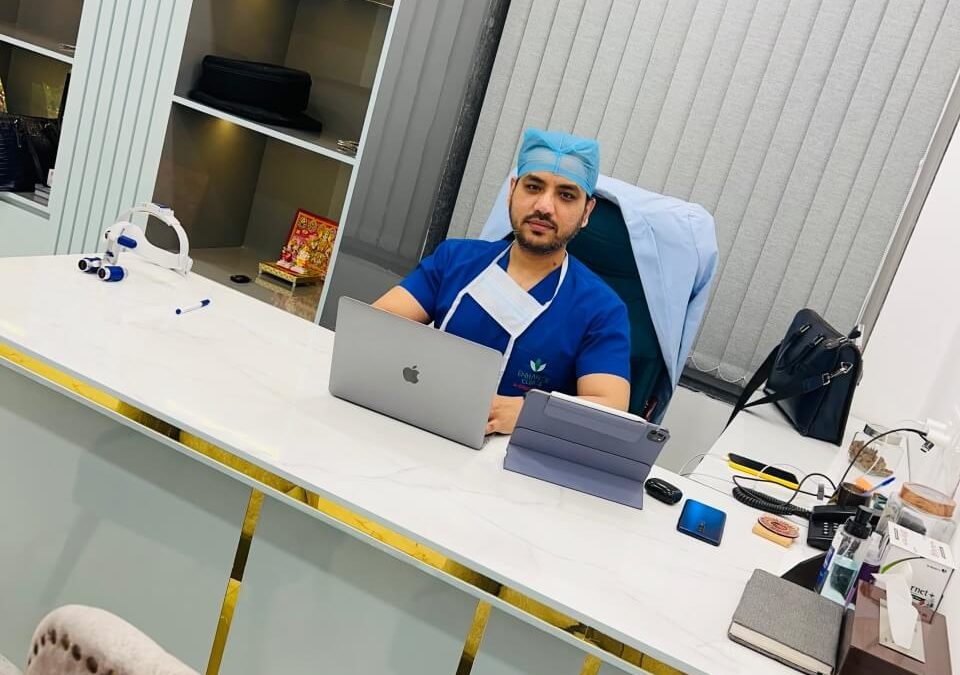Introduction:
In recent years, the allure of India has transcended its rich tapestry of cultures, historic landmarks, and culinary delights. The nation has emerged as a beacon for those seeking medical excellence, particularly in the realm of hair transplantation. Hair transplant tourism in India has not only become a buzzword among global travelers but also a testament to the country’s medical prowess and affordability. If you’ve ever contemplated restoring your tresses while soaking in the vibrant hues of India, you’re not alone. Dive into this comprehensive guide to understand why India is fast becoming the world’s preferred destination for hair transplant procedures and how you can embark on this life-changing journey.
Table of Contents:
- The Rise of Medical Tourism in India
- Understanding Hair Transplant Procedures
- Why Choose India for Hair Transplant?
- Top Destinations for Hair Transplant in India
- Preparing for Your Hair Transplant Journey
- Potential Challenges and How to Overcome Them
- The Future of Hair Transplant Tourism in India
- Conclusion
- FAQs (Frequently Asked Questions)
The Rise of Medical Tourism:
India, with its millennia-old traditions of Ayurveda and Yoga, has always been a sanctuary for those seeking holistic healing. But in the modern era, it’s not just the ancient practices that are drawing global attention. The surge in medical tourism in India is a testament to the country’s rapid advancements in healthcare and its ability to blend quality with affordability.
Over the past few decades, India has meticulously carved a niche for itself on the global medical tourism map. Factors such as internationally accredited hospitals, cutting-edge technology, and highly trained medical professionals have played pivotal roles in this ascent. But what truly sets India apart is its unique proposition of world-class treatments at a fraction of the cost found in Western countries.
The tapestry of medical tourism in India is vast, encompassing everything from cardiac surgeries to cosmetic procedures. However, among these, hair transplant tourism stands out, reflecting the perfect amalgamation of India’s surgical expertise and the growing global demand for hair restoration solutions. As more individuals discover the benefits of undergoing hair transplant procedures in India’s top-tier clinics, the country’s reputation as a premier destination for medical tourism continues to soar.
Understanding The Hair Transplant Techniques
Hair loss, a concern that transcends borders and cultures, has driven many to seek effective solutions. Among the myriad of treatments available, hair transplantation stands out as a permanent and natural-looking remedy. But what exactly does this procedure entail?
At its core, hair transplant is a surgical technique that involves removing hair follicles from one part of the body (known as the ‘donor site’) and transplanting them to the balding or thinning areas (the ‘recipient site’). Two primary methods dominate the landscape of hair transplantation:
FUE (Follicular Unit Extraction): This modern technique involves extracting individual hair follicles and implanting them into the recipient area. It’s lauded for its minimal scarring and quicker recovery times.
FUT (Follicular Unit Transplantation): Often referred to as the ‘strip method’, FUT involves removing a strip of skin with hair from the donor area, which is then dissected into individual follicular units and transplanted. While it allows for a larger number of grafts in a single session, it might leave a linear scar on the donor site.
The allure of a hair transplant, especially when undertaken in renowned clinics in India, lies in its promise of natural results and a significant boost in self-confidence. However, like all medical procedures, it’s crucial to be aware of the potential risks and benefits. Ensuring you’re in the hands of experienced surgeons, like those found in India’s top hair transplant hubs, can make all the difference in your hair restoration journey.
Why Choose India for Hair Transplant?
The quest for a fuller, more vibrant mane often leads individuals across borders, and increasingly, India has become the destination of choice. But what makes the subcontinent a magnet for hair transplant enthusiasts?
Cost-Effectiveness: One of the primary draws of undergoing a hair transplant in India is the cost advantage. While maintaining high standards of medical care, India offers these procedures at a fraction of the price one might encounter in North America or Europe. This affordability, combined with the allure of travel, makes it an enticing package for many.
Expertise and Innovation: India boasts a plethora of skilled surgeons who have not only honed their craft domestically but have often undergone training in renowned institutions globally. Their expertise, coupled with state-of-the-art clinics equipped with the latest technology, ensures that patients receive top-tier care.
Success Stories: The growing number of testimonials and success stories emanating from India speaks volumes. From celebrities to everyday individuals, many have found their hair restoration solution on Indian shores, and their transformative journeys serve as a beacon for others contemplating a similar path.
Holistic Experience: Beyond the procedure itself, India offers a holistic experience. The opportunity to merge medical treatment with the exploration of India’s rich cultural tapestry – from its ancient temples to its bustling bazaars – provides an added dimension to the hair transplant journey.
In essence, choosing India for a hair transplant is not just about addressing hair loss; it’s about embarking on a journey that rejuvenates both the scalp and the soul.
Top Destinations for Hair Transplant in India
India’s vast and diverse landscape is home to several cities that have become renowned hubs for medical excellence. Among these, three cities stand out for their prowess in hair transplantation: Mumbai, Delhi, and Gurgaon.
Mumbai: Often referred to as the ‘City of Dreams’, Mumbai is not just India’s entertainment capital but also a leading center for medical tourism. Patients can expect top-notch facilities and expert surgeons in this bustling metropolis, all while experiencing its vibrant culture and iconic landmarks.
Delhi: As the nation’s capital, Delhi offers a rich tapestry of history blended with modern medical facilities. The city’s state-of-the-art clinics cater to both domestic and international patients, ensuring world-class treatments. After undergoing a procedure, patients can explore Delhi’s historical wonders, from the majestic Red Fort to the serene Lotus Temple.
Gurgaon: A stone’s throw away from Delhi, Gurgaon has rapidly evolved into a medical tourism hotspot. Known for its modern infrastructure and corporate hubs, the city is also home to some of the best hair transplant clinics in the country. At the forefront of this is our very own clinic, helmed by the esteemed Dr. Gaurav Solanki. With a reputation for excellence, Dr. Solanki has meticulously documented over 200 hair transplant results, showcasing the transformative journeys of his patients. For those keen on exploring these success stories, you can view the detailed Hair Transplant Before/After Page. And if Gurgaon is your chosen destination for hair restoration, we invite you to explore more about our offerings and why we are the top choice for hair transplant in Gurgaon.
Preparing for Your Hair Transplant Journey to India
Embarking on a hair transplant journey, especially in a foreign country, requires meticulous planning and preparation. From initial research to setting foot in India, every step is crucial to ensure a seamless experience. Here’s a guide to help you navigate this transformative journey:
Research and Consultation: Begin with thorough research. Explore clinics, read reviews, and most importantly, schedule consultations. Virtual consultations, offered by many clinics including ours, allow you to discuss your concerns and get expert opinions without geographical constraints.
Budgeting: While hair transplant in India offers cost advantages, it’s essential to budget for the procedure, accommodation, travel, and any additional expenses. This ensures you have a stress-free experience without any financial surprises.
Travel Documentation: Ensure your passport is valid for at least six months from your planned travel date. Depending on your nationality, you might require a medical visa to undergo a procedure in India. Always check the latest visa requirements and apply well in advance.
Accommodation and Local Transportation: Choose a comfortable accommodation close to your chosen clinic. Many clinics, including ours, offer assistance with booking accommodations and arranging local transportation, ensuring your stay is hassle-free.
Pre-Procedure Guidelines: Dr. Gaurav Solanki and our team will provide specific guidelines to follow before your procedure. This might include avoiding certain medications, refraining from smoking or alcohol, and getting specific blood tests done.
Pack Accordingly: Apart from your regular travel essentials, consider packing loose-fitting shirts (easy to wear post-procedure), a soft pillow (to support your head), and any prescribed medications.
Local Etiquette and Culture: While India is diverse and welcoming, it’s always a good gesture to be aware of local customs and etiquettes. A simple “Namaste” can go a long way in building rapport!
Remember, the key to a successful hair transplant journey lies in preparation. By following these steps and maintaining open communication with your chosen clinic, you’re setting the stage for a transformative experience in India.
Potential Challenges and How to Overcome Them
While India offers unparalleled advantages for hair transplant tourism, like any international medical journey, there can be challenges. Being aware of these potential hurdles and knowing how to navigate them can make your experience smoother and more rewarding.
Cultural Differences: India’s rich tapestry of cultures is enchanting, but it can also be overwhelming for first-time visitors.
Solution: Familiarize yourself with local customs and etiquettes. A basic understanding of cultural norms, such as greetings and dress codes, can enhance your interactions and experiences.
Language Barriers: While English is widely spoken in medical facilities, there might be instances where you encounter language differences.
Solution: Most top-tier clinics, including ours led by Dr. Gaurav Solanki, have English-speaking staff to assist international patients. Additionally, translation apps can be handy for day-to-day interactions.
Post-Procedure Care: Ensuring proper care post-transplant is crucial for optimal results.
Solution: Follow the detailed aftercare instructions provided by your surgeon. Our clinic offers comprehensive post-procedure guidelines and support, ensuring you’re well-informed and cared for even after you leave our premises.
Follow-up Appointments: Being in a different country might make follow-ups seem challenging.
Solution: Many clinics offer virtual follow-up consultations, allowing you to discuss your recovery and any concerns with your surgeon from the comfort of your home.
Addressing Complications: While rare, complications can arise post-procedure.
Solution: Choose a reputable clinic with a track record of success. Should any issues arise, our team, under the guidance of Dr. Gaurav Solanki, is committed to providing prompt assistance and solutions.
Navigating Local Transportation: Getting around in a new city can be daunting.
Solution: Opt for clinic-arranged transportation or use reputable taxi services. Apps like Uber and Ola are widely used in India and offer convenient travel options.
By being prepared and staying informed, you can transform potential challenges into mere stepping stones, leading to a successful and enriching hair transplant journey in India.
The Future of Hair Transplant Tourism in India
The trajectory of hair transplant tourism in India has been nothing short of remarkable. With its blend of medical expertise, affordability, and cultural allure, India has firmly established itself as a global leader in this domain. But what does the future hold for this burgeoning sector?
Technological Advancements: The realm of hair transplantation is continuously evolving, with new technologies and techniques emerging. India, with its commitment to medical innovation, is poised to adopt and integrate these advancements, ensuring patients receive the most cutting-edge treatments available.
Global Recognition: As more individuals share their success stories and transformative experiences from India, the country’s reputation in the global arena is set to soar even higher. This will likely lead to an influx of patients from even more diverse geographies.
Holistic Medical Tourism Packages: Beyond the procedure itself, there’s a growing trend towards offering holistic medical tourism packages. These packages might encompass not just the surgery but also recuperative vacations, wellness retreats, and cultural explorations, providing a comprehensive Indian experience.
Stringent Quality Standards: With the growth of the sector, there will be an increased emphasis on maintaining and elevating quality standards. Clinics, including ours led by Dr. Gaurav Solanki, will continue to prioritize patient safety, satisfaction, and results.
Collaborative Research and Training: India’s leading hair transplant clinics are likely to collaborate more extensively with international institutions for research and training. This will further enhance the skill set of Indian surgeons and contribute to global knowledge sharing.
In essence, the future of hair transplant tourism in India is bright and promising. As the country continues to innovate and elevate its offerings, patients can look forward to even more exceptional experiences and transformative results.
Conclusion
The journey of hair transplant tourism in India is a testament to the country’s prowess in blending medical excellence with its rich cultural heritage. From the bustling streets of Mumbai to the modern infrastructure of Gurgaon, India offers a unique blend of world-class hair transplant services set against a backdrop of timeless traditions and vibrant landscapes.
Choosing India for your hair transplant journey is not merely about addressing hair loss; it’s about embracing a holistic experience that rejuvenates both the body and the soul. With renowned surgeons like Dr. Gaurav Solanki leading the way, patients are assured of results that transform not just their appearance but also their confidence and outlook on life.
As we’ve navigated the intricacies of hair transplant procedures, top destinations, and the future prospects of this sector in India, one thing remains clear: India’s position as a premier destination for hair transplant tourism is well-deserved. Whether you’re at the beginning of your research or on the cusp of making a decision, we hope this guide has provided valuable insights and clarity.
Remember, the journey to restoring your crowning glory can be as enriching as the destination itself. And in the vast landscape of hair transplant options, India shines brightly as a beacon of hope, expertise, and transformation.
FAQs (Frequently Asked Questions)
Q1: Why is India becoming a popular destination for hair transplant procedures?
Answer: India offers a unique combination of highly skilled surgeons, state-of-the-art facilities, and cost-effective treatments. Additionally, the opportunity to combine the procedure with a cultural and touristic experience makes India an attractive destination for many.
Q2: How do I choose the right clinic or surgeon in India?
Answer: Research is key. Look for clinics with experienced surgeons, like Dr. Gaurav Solanki, who have documented success stories and positive reviews. Virtual consultations can also provide insights into the clinic’s approach and expertise.
Q3: How long should I plan to stay in India post-procedure?
Answer: While the actual procedure might take a day, it’s advisable to stay for at least 7-10 days for post-operative care, follow-up consultations, and to enjoy a bit of local sightseeing.
Q4: What is the difference between FUE and FUT?
Answer: FUE (Follicular Unit Extraction) involves extracting individual hair follicles and implanting them, while FUT (Follicular Unit Transplantation) involves removing a strip of skin with hair, which is then dissected and transplanted. Your surgeon will recommend the best method based on your needs.
Q5: Can I combine my hair transplant procedure with other cosmetic treatments in India?
Answer: Absolutely! India offers a range of cosmetic treatments. Discuss your desires with your clinic, and they can guide you on combining procedures safely.
Q6: How do I care for my transplanted hair after returning to my home country?
Answer: Your surgeon will provide detailed aftercare instructions. It’s crucial to follow these guidelines and stay in touch with the clinic for any queries or concerns.




